A Cultural Odyssey at Kaiyuan Temple: Experience the Essence of Chinese Buddhism

An Essential Guide to Visiting Kaiyuan Temple
Nestled in the heart of Quanzhou, the Kaiyuan Temple (开元寺) stands as a testament to rich history and spiritual allure. Founded during the Tang Dynasty in 686 AD, this remarkable complex offers visitors a unique glimpse into the architectural and cultural grandeur of ancient China. As one of the oldest and largest Buddhist temples in the region, it is not merely a place of worship but also a symbol of Quanzhou’s past affluence as a bustling maritime trade hub.
Stepping through the temple gates, you are greeted by a serene atmosphere that invites contemplation and reflection. The intricate structures, framed by ancient trees and lush gardens, provide an enchanting backdrop for a leisurely stroll. Among its many features, the temple is renowned for its two towering pagodas and the legendary mulberry tree, said to have miraculously sprouted a lotus flower—a story that captures the imagination of all who visit.
In this essential guide, we will explore everything you need to know about visiting Kaiyuan Temple, from its historical significance and architectural highlights to practical tips for making the most of your visit. Whether you seek spiritual enlightenment, a deeper understanding of Buddhist culture, or simply a peaceful retreat from the hustle and bustle, Kaiyuan Temple promises an unforgettable experience that resonates with the echoes of centuries past.
In This Guide
- An Essential Guide to Visiting Kaiyuan Temple
- The Rich History and Legends of Kaiyuan Temple
- Main Highlights: What You Absolutely Can’t Miss
- Planning Your Visit: A Practical Guide
- Tickets: Prices, Booking, and Tips
- How to Get There: A Complete Transportation Guide
- Local Cuisine and Accommodation Nearby
- Frequently Asked Questions
- Final Thoughts on Your Trip
The Rich History and Legends of Kaiyuan Temple
Nestled in the heart of Quanzhou, the Kaiyuan Temple (开元寺) stands as a testament to the rich tapestry of Chinese history, culture, and spirituality. Founded during the Tang Dynasty in 686 AD, this magnificent temple complex has endured the test of time, evolving into a symbol of the region’s historical significance and architectural grandeur.
The legend surrounding the temple is as captivating as its physical presence. It is said that a local landlord discovered a lotus flower blooming upon a mulberry tree in his garden. This miraculous event inspired him to donate the land for the construction of the temple, a gesture that highlights the intertwining of nature and spirituality in Chinese culture. The lotus, often associated with purity and enlightenment, became a fitting emblem for this sacred site.
Throughout the centuries, Kaiyuan Temple has served as a pivotal center for Buddhist practice and education. Its vast grounds encompass several impressive structures, including the iconic two pagodas flanking the entrance, which rise majestically against the skyline. These towers, known as the East Pagoda and the West Pagoda, were built during the Song Dynasty and add to the temple’s grandeur, reflecting the architectural sophistication of their time.
The temple complex has also witnessed the ebb and flow of Quanzhou’s history as a maritime trading hub. In the Song and Yuan Dynasties, Quanzhou flourished as one of the most important ports in China, facilitating trade with distant lands. The temple became a sanctuary for travelers and merchants, offering a space for reflection and prayer amidst their journeys.
Kaiyuan Temple is not only a religious site but also a UNESCO World Heritage Site, underscoring its global significance. Its serene environment, coupled with the intricate carvings and ancient relics housed within, provides an immersive experience for visitors. Strolling through its courtyards allows one to feel the echoes of prayers and the whispers of history that linger in the air.
Visiting Kaiyuan Temple offers a unique opportunity to delve into the legends of the past while appreciating the harmonious blend of nature and spirituality that characterizes this sacred place. Whether you’re drawn by its architectural beauty, historical significance, or the legends that have shaped it, Kaiyuan Temple promises an enriching experience that transcends time and culture.
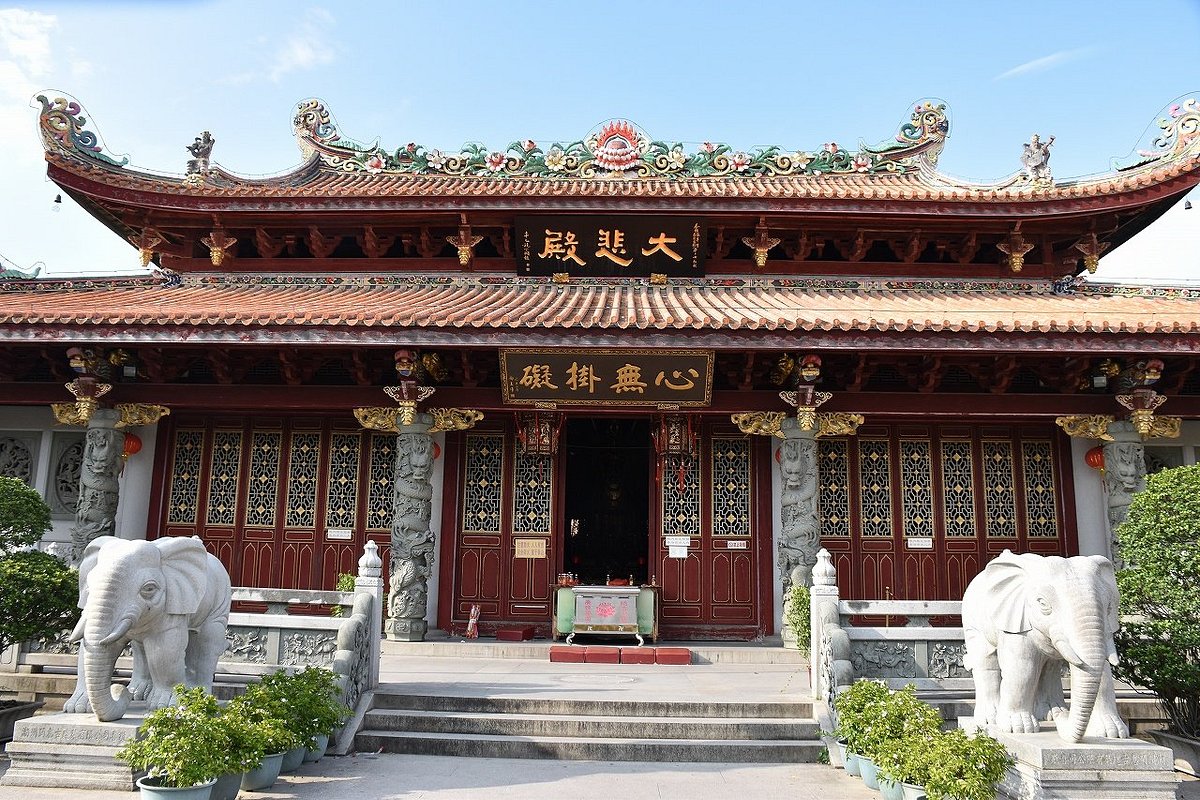
Kaiyuan Temple.
Main Highlights: What You Absolutely Can’t Miss
When visiting Kaiyuan Temple in Quanzhou, there are several highlights that you simply cannot miss. This ancient temple complex, founded during the Tang dynasty in 686 AD, is not only a spiritual haven but also a remarkable testament to the rich history and culture of the region. Here are the must-see features that will enrich your experience.
The Magnificent Main Hall
The centerpiece of Kaiyuan Temple is its grand Main Hall, which boasts intricate architectural details that reflect traditional Tang dynasty design. As you step inside, the serenity envelops you, and you’ll find beautifully crafted statues of various Buddhist deities. The hall is often filled with the soft sound of chanting and incense wafting through the air, creating a truly spiritual atmosphere.
The Twin Pagodas
Flanking the temple are the iconic twin pagodas, which are not only breathtaking to behold but also provide a glimpse into ancient engineering. These structures, standing tall since the Song dynasty, offer stunning views of the surrounding area. Climbing to the top rewards you with panoramic vistas of Quanzhou, making it an ideal spot for photography and moments of reflection.
The Ancient Mulberry Tree
A highlight of Kaiyuan Temple is the legendary mulberry tree, believed to have miraculous properties. According to local lore, the land for the temple was donated by a landlord whose mulberry tree grew a lotus flower. This tree is a living piece of history, and visitors often stop to marvel at its grandeur while learning about the story behind it. Don’t forget to take a moment to appreciate this unique natural feature.
Serene Courtyards
As you explore the vast grounds of the temple, be sure to wander through the tranquil courtyards. These spaces are adorned with lush gardens and ancient stone carvings, providing a peaceful retreat from the hustle and bustle of city life. It’s the perfect spot to relax, meditate, or simply enjoy the ambiance of this historic site.
The Cultural Exhibits
Kaiyuan Temple isn’t just about its religious significance; it also serves as a cultural hub. Look out for exhibits that showcase the history of Buddhism in Quanzhou and the temple’s role in maritime trade during the Song and Yuan dynasties. Understanding this context enhances your visit and appreciation for the site.
The Surrounding Historic Area
After exploring the temple, take a stroll in the nearby historic area of Quanzhou. Here, you’ll find charming streets lined with shops and cafes in buildings that echo the city’s rich maritime past. This area is perfect for sampling local delicacies or picking up a unique souvenir to remember your visit.
Practical Tips
- Entry Fee: Admission to Kaiyuan Temple is free, making it accessible for all travelers.
- Best Time to Visit: To fully enjoy the temple without the crowds, consider visiting early in the morning or on weekdays.
- Visiting Hours: The temple is open daily from 8:00 AM to 5:30 PM.
Kaiyuan Temple is a must-visit destination that beautifully encapsulates the essence of Quanzhou’s historical and cultural heritage. Each highlight offers a unique glimpse into the past, making your visit an unforgettable journey through time.
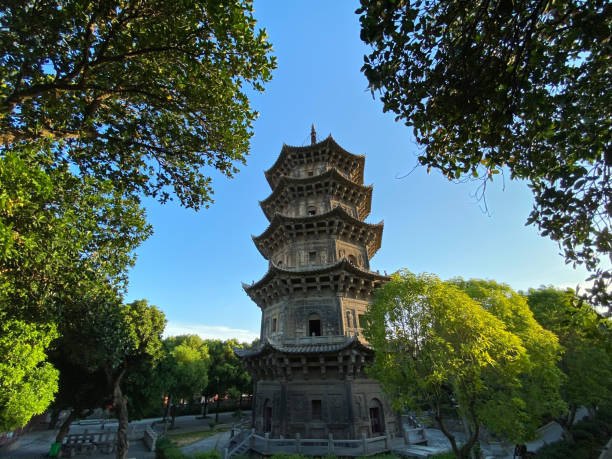
Kaiyuan Temple.
Planning Your Visit: A Practical Guide
Your Guide to Visiting Kaiyuan Temple (开元寺)
Planning a visit to Kaiyuan Temple, one of the most significant historical and cultural sites in Quanzhou, China, is an exciting journey through time. This ancient temple complex, founded in the 7th century during the Tang dynasty, is not just a place of worship but also a testament to the region’s rich maritime heritage. Here’s everything you need to know to make the most of your visit.
Opening Hours
Kaiyuan Temple welcomes visitors daily from 8:00 AM to 5:30 PM. It’s advisable to arrive early to fully enjoy the serene atmosphere before the crowds gather, especially on weekends and public holidays when it can get particularly busy.
Getting There
Kaiyuan Temple is centrally located in Quanzhou, making it easily accessible. If you are staying within the city, consider taking a local taxi or rideshare service, which are both convenient and affordable. Alternatively, public buses frequently run routes to the temple, providing an economical option for travelers.
Admission
Entry to Kaiyuan Temple is free, allowing everyone to explore its beautiful grounds without any financial burden. However, donations are welcomed to help maintain the temple and its facilities.
What to Expect
As you step into the temple complex, you’ll be greeted by a stunning array of ancient architecture and serene gardens. The expansive layout includes multiple courtyards, making it a peaceful retreat from the bustling city outside. Notable features include the two iconic pagodas that flank the temple, as well as the historic mulberry tree that is said to have inspired its founding legend.
Tips for Exploration:
– Take a Guided Tour: Consider hiring a local guide or joining a tour for deeper insights into the temple’s history and significance.
– Photography: Capture the intricate carvings and stunning structures, but be mindful of worshippers and maintain respect for the sacred space.
– Stroll the Grounds: Allocate time to wander through the temple’s gardens and surrounding areas, where you can appreciate the tranquility and beauty of this historic site.
Nearby Attractions
After your visit to Kaiyuan Temple, take the opportunity to explore other nearby attractions:
– Dongxi Tower (204 ft away): An observation deck with panoramic views of the city.
– Tonghuai Temple (0.9 mi): Another exquisite religious site worth visiting.
– Quanzhou Maritime Museum (1.6 mi): Dive deeper into the maritime history of Quanzhou.
Dining Options
When you’re ready for a meal, numerous dining options are available nearby:
– Casanova (Italian cuisine, just 111 ft away)
– Dongchen Beef Shop (Local Chinese dishes, also 111 ft away)
– Hongshi Fashi Vietnam Cuisine (Vietnamese fare, just a short walk away)
Practical Tips
- Dress Code: While there is no strict dress code, it’s advisable to wear respectful attire, covering shoulders and knees, especially in religious sites.
- Stay Hydrated: Bring a water bottle, as you may spend several hours walking and exploring.
- Safety and Etiquette: Be respectful of worshippers and local customs. Photography may be restricted in certain areas, so look for signs indicating where it’s appropriate.
Visiting Kaiyuan Temple is not just about seeing a historic site; it’s an opportunity to immerse yourself in the spiritual and cultural heart of Quanzhou. Whether you’re a history buff, a photography enthusiast, or simply seeking a peaceful retreat, this temple is sure to leave a lasting impression. Enjoy your visit!
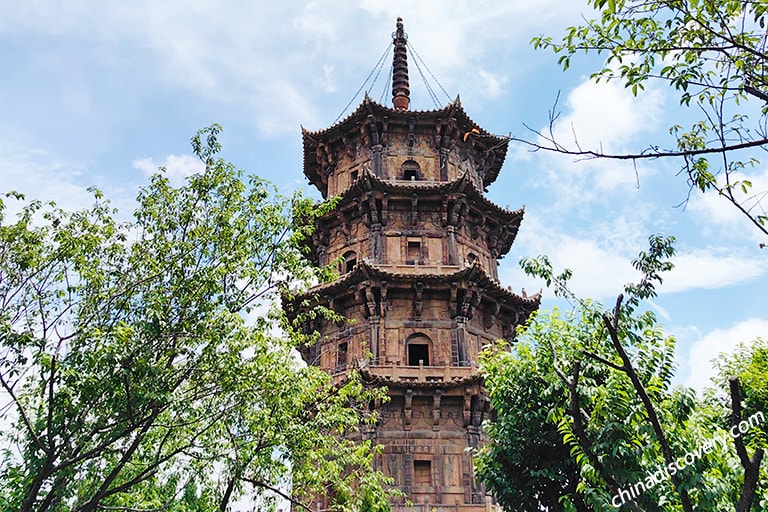
Kaiyuan Temple.
Tickets: Prices, Booking, and Tips
Visiting the historic Kaiyuan Temple (开元寺) is a must for any international traveler exploring Quanzhou. This UNESCO World Heritage site, founded during the Tang dynasty in the 7th century, is not only an architectural marvel but also a serene retreat into China’s rich spiritual heritage.
Admission Details
One of the most appealing aspects of visiting Kaiyuan Temple is that entry is free. This makes it an accessible destination for all travelers, allowing you to explore the expansive grounds, ancient structures, and the enchanting atmosphere without the worry of admission fees. However, it’s worth noting that the temple can become quite crowded, especially on weekends and during public holidays, so planning your visit during off-peak hours may enhance your experience.
Operating Hours
The temple is open daily from 8:00 AM to 5:30 PM. To fully appreciate the tranquility of the grounds, visiting early in the morning or later in the afternoon can be particularly rewarding. These times often offer a quieter atmosphere, allowing for a more reflective experience as you wander through the courtyards and admire the intricate architecture.
Booking Tips
While no advance booking is required for admission, if you wish to delve deeper into the history and significance of the temple, consider hiring a local guide. Many private tours are available that can enhance your understanding of the temple’s cultural context, including:
- Quanzhou Private Customized Day Tour: Duration: 6–8 hours, starting from approximately $174.
- Private Day Tour of Quanzhou City Highlights: Duration: 9 hours, starting from around $164.
These options often include transportation and snacks, making for a comfortable day of exploration.
Additional Advice
- Dress Appropriately: As a place of worship, it’s respectful to dress modestly. Ensure your attire covers shoulders and knees.
- Plan Your Visit Around Local Festivals: If you can, try to time your visit with any local festivals or ceremonies, which can provide a unique insight into the cultural practices surrounding the temple.
- Explore the Surrounding Area: After visiting the temple, take some time to wander the nearby old town, where charming cafes and shops are often housed in historic buildings. This area reflects Quanzhou’s vibrant atmosphere and maritime heritage.
By keeping these tips in mind, your visit to Kaiyuan Temple will be a memorable highlight of your journey in China. Enjoy the blend of history, culture, and tranquility that this remarkable site offers!
How to Get There: A Complete Transportation Guide
Visiting the ancient Kaiyuan Temple in Quanzhou is an enriching experience, and getting there is straightforward with several transportation options available. Whether you’re traveling from nearby cities or venturing from farther afield, here’s a complete guide to help you navigate your way to this historic site.
Arriving by Air
The Nearest Airport: Quanzhou Jinjiang International Airport (JJN)
Located approximately 30 kilometers from the city center, Quanzhou Jinjiang International Airport serves various domestic and international flights. Upon arrival, you can choose from several transportation options to reach the temple:
- Taxi: The most convenient way to get to Kaiyuan Temple. A taxi ride will take about 40 minutes and cost around 80-100 CNY (approximately $12-15 USD).
- Airport Shuttle: Look for the shuttle bus service that connects the airport to downtown Quanzhou. From the bus station, you can take a taxi or a local bus to the temple.
Arriving by Train
Quanzhou Railway Station
Quanzhou is well-connected by train, making it easy for travelers from cities like Xiamen, Fuzhou, and Shanghai. Upon arrival at Quanzhou Railway Station:
- Taxi: Taxis are readily available outside the station. The ride to Kaiyuan Temple will take about 15-20 minutes and cost around 20-30 CNY ($3-5 USD).
- Public Bus: Alternatively, you can take Bus No. 2 or 3 from the station, which will drop you off near the temple. This option is more economical but may take longer due to multiple stops.
Arriving by Bus
Long-Distance Bus Services
Quanzhou’s long-distance bus terminal offers services from several cities across China. If you plan to arrive by bus:
- Local Transportation: Once you arrive at the Quanzhou Long-Distance Bus Station, you can take a taxi directly to the temple, which is just a 10-15 minute ride.
- Public Bus: Look for local buses heading towards the Kaiyuan Temple area. Bus routes can vary, so it’s advisable to ask locals for the best option.
Local Transportation
Once you’re in Quanzhou, navigating to Kaiyuan Temple is relatively easy:
- Walking: If you’re staying in the city center, the temple is within walking distance of many hotels and attractions. The scenic route through the old town provides a delightful experience.
- Bicycles and E-scooters: For a more adventurous option, consider renting a bicycle or an e-scooter, available through various local rental services. This is a fun way to explore the area while making your way to the temple.
Tips for a Smooth Journey
- Language Barrier: While many signs are in English, it may be helpful to have the name “Kaiyuan Temple” written in Chinese (开元寺) to show taxi drivers.
- Timing Your Visit: The temple can get crowded, especially on weekends and public holidays. Arriving early in the morning can help you enjoy the serene atmosphere.
- Cash Ready: While many places accept mobile payments, it’s wise to carry some cash (CNY) for transportation and small purchases.
By following this transportation guide, you can easily reach Kaiyuan Temple and immerse yourself in the historical and cultural richness of Quanzhou. Enjoy your visit!
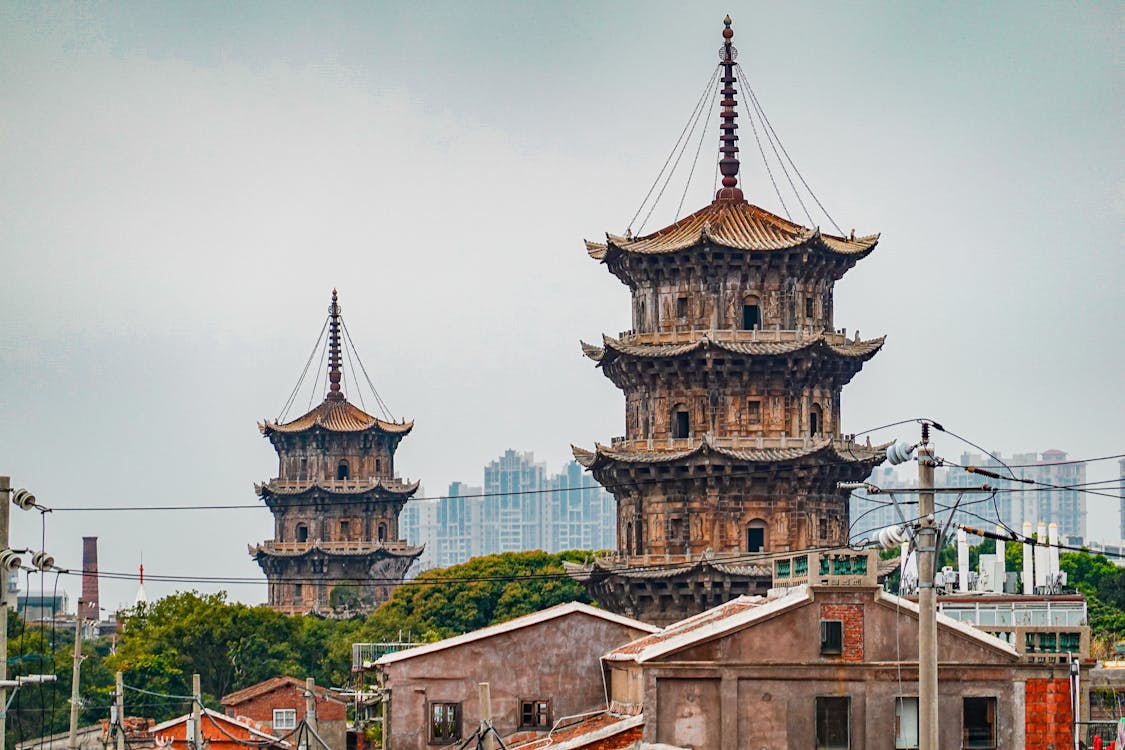
Kaiyuan Temple.
Local Cuisine and Accommodation Nearby
Visiting the historic Kaiyuan Temple (开元寺) in Quanzhou offers not just a glimpse into ancient architecture and spirituality but also an opportunity to indulge in the local culinary scene and find comfortable accommodations nearby.
Dining Options
1. Casanova
Distance: 111 ft
For travelers craving Italian cuisine, Casanova serves up a delightful array of traditional dishes, including handmade pastas and wood-fired pizzas. The cozy ambiance makes it a perfect spot for a relaxing meal after exploring the temple grounds.
2. Hongshi Fashi Vietnam Cuisine
Distance: 111 ft
For a taste of Southeast Asia, step into Hongshi Fashi, where you can savor authentic Vietnamese dishes. Their pho and banh mi are particularly popular among locals and visitors alike, offering a refreshing change of pace from traditional Chinese fare.
3. QuanZhou Hotel Western Restaurant
Distance: 0.5 mi
If you’re in the mood for a hearty meal, this restaurant within the QuanZhou Hotel serves a variety of Western dishes, including burgers and salads. It’s a convenient option for those looking for a familiar taste after a long day of sightseeing.
4. MaYi TingYuan Coffee SiFang Cai
Distance: 0.5 mi
For a casual meal or a coffee break, this café offers a selection of Fujian-style dishes along with a cozy atmosphere perfect for unwinding. Their local teas are a must-try!
5. Dongchen Beef Shop
Distance: 111 ft
For meat lovers, this spot specializes in beef dishes, showcasing local flavors and cooking styles. Their beef noodles are highly recommended, providing a hearty meal that is both delicious and filling.
Places to Stay
1. QuanZhou Hotel
Distance: 0.5 mi
Conveniently located near Kaiyuan Temple, the QuanZhou Hotel offers comfortable accommodations with modern amenities. Guests appreciate its proximity to local attractions and the warm hospitality of the staff.
2. Jinjiang Inn Quanzhou Donghu
Distance: 1.5 mi
This budget-friendly option provides clean, simple rooms and a welcoming atmosphere. It’s a great choice for travelers looking for affordability without sacrificing comfort.
3. Quanzhou Shiyuan Hotel
Distance: 1 mi
Offering both Chinese and Western-style accommodations, this hotel is known for its friendly service and convenient location. It’s an excellent base for exploring Quanzhou’s rich cultural heritage.
4. Fuzhou Hotel
Distance: 1.3 mi
Situated in a vibrant area of Quanzhou, the Fuzhou Hotel boasts spacious rooms and a variety of dining options within the hotel. Its location makes it easy to explore nearby attractions.
5. Hanting Express Quanzhou
Distance: 2 mi
This chain hotel is a reliable option for budget-conscious travelers. With comfortable rooms and essential amenities, it provides a good night’s sleep after a day of exploring.
After visiting the magnificent Kaiyuan Temple, you can enjoy the flavors of Quanzhou and find a perfect place to rest, making your journey even more memorable. Whether you seek local delights or international cuisine, there’s something for every palate nearby!
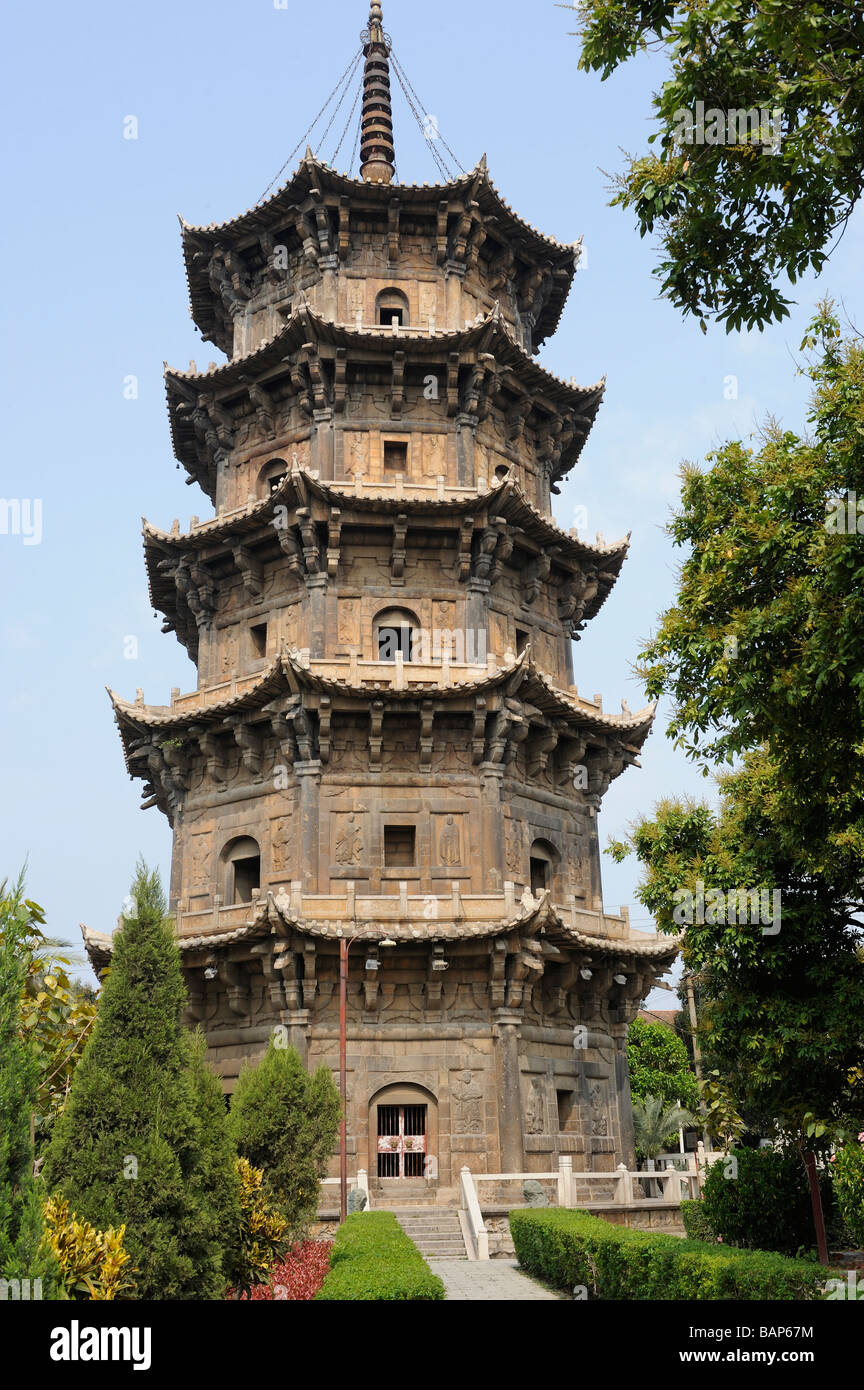
Kaiyuan Temple.
Frequently Asked Questions
Common Inquiries About Kaiyuan Temple
-
What are the opening hours for Kaiyuan Temple?
Kaiyuan Temple is open daily from 8:00 AM to 5:30 PM. It’s advisable to arrive early to enjoy the serene atmosphere before the crowds gather, especially on weekends and public holidays. -
Is there an entrance fee to visit the temple?
No, entry to Kaiyuan Temple is free. This makes it a great option for budget-conscious travelers looking to explore cultural and historical sites. -
How can I reach Kaiyuan Temple from the city center?
The temple is conveniently located in Quanzhou, and you can reach it via local buses, taxis, or by walking if you’re staying nearby. Many visitors also opt for guided tours that include transportation. -
What should I wear when visiting the temple?
Visitors are encouraged to dress modestly out of respect for the religious site. Comfortable shoes are recommended as you may want to explore the extensive grounds. -
Are there guided tours available?
Yes, there are various guided tours available that can enhance your experience. These tours often include insights into the temple’s history and significance, as well as visits to nearby attractions. -
What is the best time to visit Kaiyuan Temple?
Early mornings or late afternoons are ideal times to visit, as the lighting is beautiful for photography and the crowds are thinner. Visiting during weekdays can also provide a quieter experience. -
Can I take photographs inside the temple?
Photography is generally allowed in the temple grounds, but be sure to respect any signs indicating restricted areas, particularly in places where worship is taking place. -
What nearby attractions should I not miss?
After visiting Kaiyuan Temple, consider exploring other nearby sites like the Dongxi Tower and the Quanzhou Maritime Museum. The surrounding area is rich in history and offers many dining options as well.
Final Thoughts on Your Trip
As you conclude your visit to the magnificent Kaiyuan Temple, take a moment to reflect on the rich tapestry of history and spirituality that envelops this UNESCO World Heritage Site. Founded during the Tang dynasty, this temple complex offers a serene escape into the past, where ancient architecture stands as a testament to Quanzhou’s illustrious maritime heritage.
Stroll through the lush grounds, admire the intricate details of the structures, and absorb the stories that whisper from the towering pagodas and sacred spaces. The legend of the mulberry tree, entwined with the temple’s origins, adds a layer of enchantment to your experience, reminding you of the deep connections between nature and spirituality.
Whether you are here to seek tranquility, explore history, or simply enjoy the beauty of your surroundings, Kaiyuan Temple invites you to pause, reflect, and appreciate the blend of cultural richness that defines this remarkable site. As you leave, carry with you the essence of Quanzhou—a city where the past and present coalesce beautifully, leaving an indelible mark on your journey.